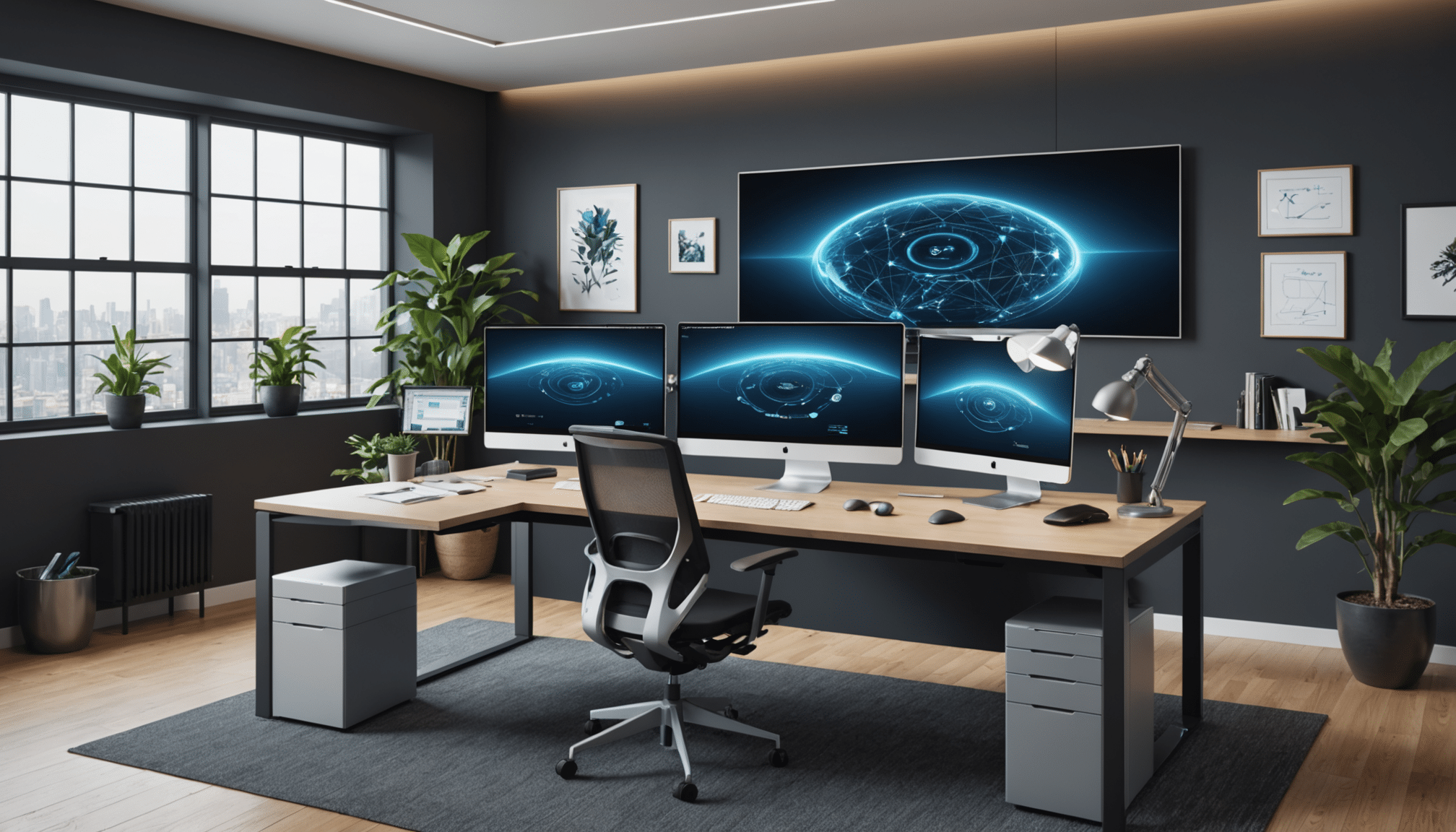Integrating augmented reality into virtual workshops represents a fascinating advancement for the field of training and learning. This innovative technology offers immersive experiences that captivate participants’ attention while stimulating their creativity. By blurring the boundaries between the digital and real worlds, augmented reality enhances educational content, transforms interactions, and simulates unique learning environments. Thus, workshops become dynamic places where learners can interact with virtual elements while developing essential practical skills.
🔥 Nous recommandons Ideamap
Ideamap est l’outil idéal pour un brainstorming ou un projet collaboratif. Grâce son interface facile et à ses fonctions IA, Ideamap booste votre créativité tout en favorisant une meilleure organisation de vos idées pour atteindre vos objectifs.

In a constantly evolving world where technology plays a predominant role, the integration of augmented reality (AR) into virtual workshops represents a significant advancement in the field of training and education. Augmented reality involves overlaying virtual elements onto our real environment, thus enriching the user experience in an interactive and immersive way. This creates more engaging and effective learning contexts.
The integration of AR into virtual workshops offers numerous advantages. First, it stimulates cognition and promotes active learning by allowing participants to interact with virtual elements in real time. For example, instead of relying on traditional training materials, learners can manipulate 3D objects, explore enriched visualizations, and tackle scenario-based challenges that reflect real-world situations. This not only makes learning more enjoyable but also strengthens the understanding of theoretical concepts.
Moreover, augmented reality allows for contextualized learning. When integrated into virtual workshops, it helps immerse learners in situations relevant to their professional reality. For instance, training on workplace safety can be enhanced with AR simulations where employees visualize potential hazards in their work environment, identify risks, and learn to respond appropriately. This immersive approach facilitates information retention and encourages the practical application of acquired knowledge.
To effectively integrate AR into virtual workshops, it is essential to choose suitable tools and platforms. Several software solutions offer augmented reality features that can be used to create engaging learning scenarios. Additionally, training trainers in the use of these technologies is crucial to maximize the benefits of this innovative approach. A thorough understanding of the tools will allow the creation of learning experiences that meet the specific needs of learners.
The collaborative dimension of virtual workshops is also enhanced by the integration of augmented reality. Participants can interact with their peers in real time, exchange ideas, and solve problems together in an enriched virtual environment. This not only fosters team spirit but also creates a support network among participants, essential for sharing knowledge and experiences.
It is also important to assess the impact of integrating augmented reality into virtual workshops. Analytical tools and feedback from learners can provide valuable data on the effectiveness of the training, areas for improvement, and elements that work well. This information is crucial for optimizing future training content and ensuring that learners’ needs are fully met.
In summary, integrating augmented reality into virtual workshops represents a revolutionary approach that redefines traditional training methods. By creating immersive and interactive learning environments, AR offers learners the opportunity to actively engage in their training, apply their knowledge in relevant contexts, and collaborate effectively with their peers. This transformation of virtual workshops paves the way for promising new pedagogical practices that address the challenges of the modern world.

FAQ – Integrating Augmented Reality into Virtual Workshops
What are the benefits of integrating augmented reality into virtual workshops? Augmented reality makes workshops more interactive and engaging, stimulating creativity and providing immersive experiences.
How does augmented reality improve learning? It allows participants to visualize complex concepts intuitively, thus promoting better understanding and retention of information.
What technologies are used for augmented reality? Technologies include specific applications, augmented reality glasses, and mobile devices capable of overlaying virtual elements onto the real world.
Is implementing augmented reality workshops costly? Prices vary, but there are affordable options that do not require heavy investments, especially for individual sessions.
Who can benefit from these augmented reality workshops? Participants from various sectors can benefit, whether for professional training, education, or personal development.
How does a virtual workshop with augmented reality unfold? Workshops begin with an introduction to the concepts, followed by practical activities where participants interact with augmented reality elements to solve problems or create projects.
Can augmented reality be integrated into existing training? Yes, it is entirely possible to integrate augmented reality into existing training to enrich the content and learning experience.
What skills are required to facilitate an augmented reality workshop? Facilitators should have a good understanding of AR technologies, pedagogical skills, and be capable of guiding participants through the proposed activities.
Are there testimonials about the use of augmented reality in workshops? Several testimonials show high satisfaction among participants, with feedback highlighting enthusiasm for interactive learning formats.














